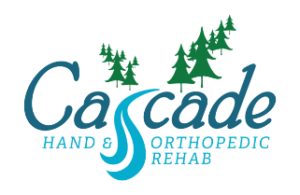What is adaptive equipment, and how is it used in occupational therapy?
One of the most significant ways our occupational therapists can help you maintain your mobility and independence is by using assistive devices, mobility aids, and environmental modifications.
Depending on your exact needs, our hand therapists might use one or more of the following pieces of adaptive equipment:
- Mobility aids: Wheelchairs, walkers, canes, and crutches to help you more easily get around.
- Dressing aids: Button hooks, long-handled shoehorns, dressing sticks, sock aids, and elastic shoelaces to facilitate independent dressing.
- Eating utensils: Built-up handles, weighted utensils, plate guards, non-slip placemats, and adapted cups to assist with feeding and meal preparation.
- Writing aids: Pen grips, weighted pens, and writing splints to improve handwriting and fine motor control.
- Adaptive computer equipment: Large print keyboards, speech recognition software, trackball mice, and screen magnifiers to support computer use.
- Reachers and grabbers: Extending tools to help you pick up items without bending or stretching.
- Adaptive seating: Ergonomic chairs, cushions, and positioning devices to promote proper posture and comfort.
- Fine motor aids: Hand therapy tools, such as therapy putty, hand exercisers, and grip strengtheners, to improve hand function and dexterity.
